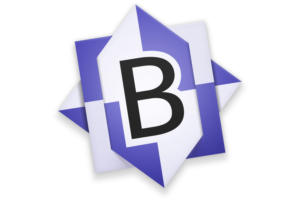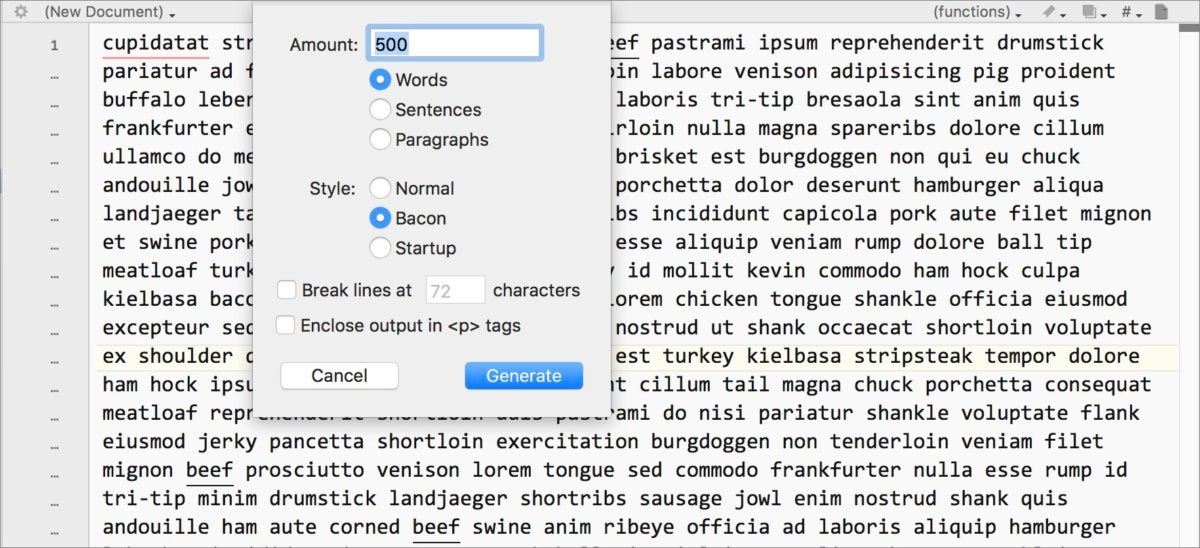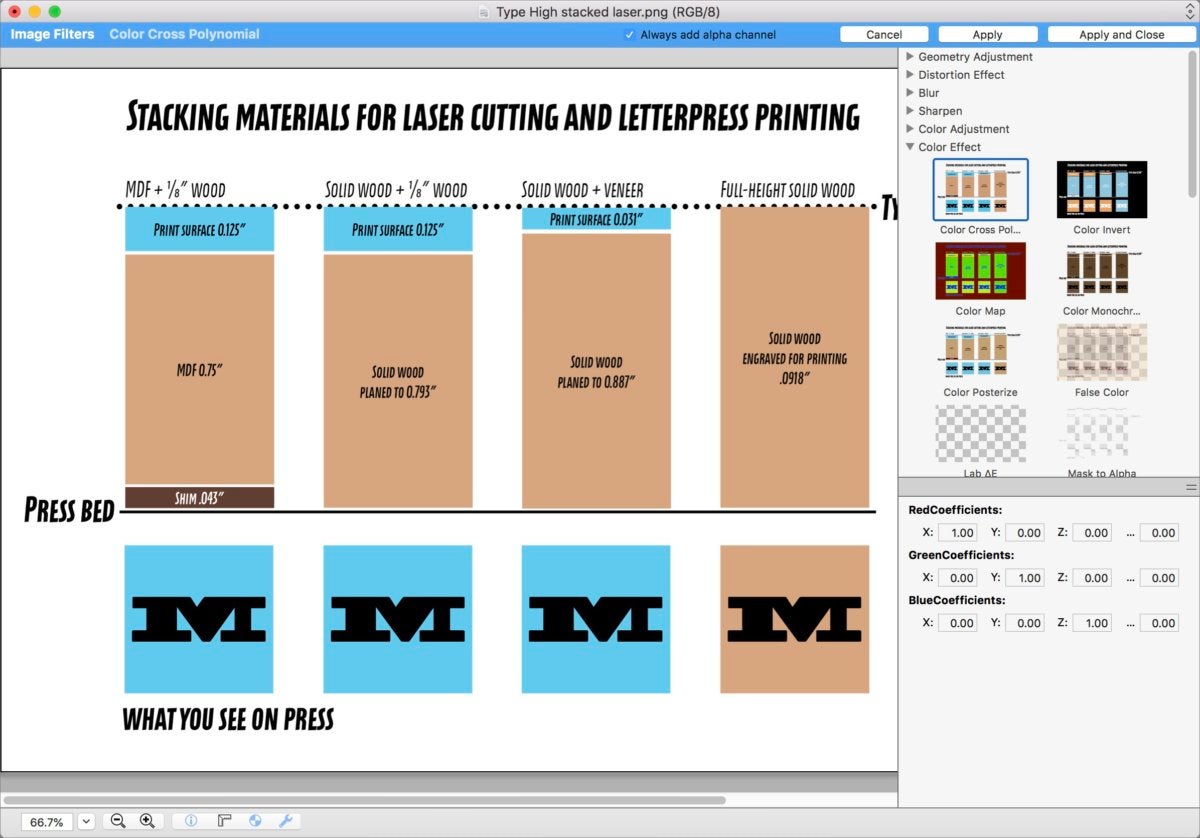It seems like it was only yesterday that I first used BareBones Software’s BBEdit, but in actuality, yesterday is so far away—25 years, in fact. With all the twists and turns across more than two decades of Apple as a company, Mac hardware, and the underlying operating system, you might think that BBEdit stands alone as a continuously-developed app shepherded largely or exclusively by the same independent developer—an app without a giant company behind it. As it turns out, BBEdit is one of several apps that’s been around the block more than a few times.
The longevity of indie apps is more extraordinary when you consider the changes Apple put the Mac through from the early 1990s to 2018. Apple switched from Motorola 680×0 processors to PowerPC to Intel chips, from 32-bit to 64-bit code, and among supported coding languages. It revved System 7 to 8 to 9, then to Unix across now 15 major releases (from 10.0 to 10.14). That’s a lot for any individual programmer or small company to cope with.
Bare Bones’s head honcho, Rich Siegel, and the developers behind three other long-running Mac software programs shared with me their insight on development histories for over 25 years, what’s changed the most during that time, and any hidden treasures users haven’t yet found.
BBEdit: More than a text editor
BBEdit emerged first as something more like a demo of a text editor in 1989, then developed into a feature-complete but free app in 1992. Bare Bones released it as a fully-supported commercial program with version 2.5 on May 11, 1993, and it’s from that date they count its anniversary, despite its bragging rights for a longer vintage. Founder Rich Siegel continues to drive development today from Rhode Island.
 Bare Bones Software
Bare Bones Software“We’ve extensively rewritten, upgraded, and optimized [BBEdit’s] internal architecture,” said Siegel. But the program continues to scratch the same itch it did at its start. “Even though it has evolved a great deal, BBEdit has stayed very close to its fundamental mission: empowering its users to accomplish tasks which would challenge or defeat other tools.”
BBEdit has added many features over the years, including clever and highly configurable auto-completion, website management, and multi-file search. While it began life as a coding tool, it now offers a minimalist environment with powerful search-and-replace and text-shuffling tools that appeals to programmers, writers (I spent hours in it daily), HTML coders, and people who have to massage text from one shape into another.
Siegel said one of the most unusual features BBEdit incorporated was built-in FTP and SFTP editing. Before it was integrated, BBEdit could work with file-transfer software like Fetch (see below) in a kind of round-trip arrangement. Siegel said a customer created a plug-in, and Bare Bones adopted his code and incorporated it.
But Siegel said what he would never have imagined adding is a “lorem ipsum” generator, which appeared in the recent 12.5 release. This generates placeholder text, and the option dates back decades in page-layout software. “There’s been a remarkable level of interest in that feature,” he said.
 IDG
IDGDid somebody say “bacon filler text”? BBEdit obliges in version 12.5.
After nearly 30 years of development, Siegel said he’s still motivated to improve BBEdit because of customer feedback. “They’re the ones we’re here to serve, and so when someone writes in and expresses a need that we can address directly, we’re motivated to make that change,” he said. (I can testify from personal experience: I’ve asked for a lot of features over the years, and some made sense for the company to add.)
Bare Bones’s workload has grown and shrunk over the decades. At one point, the company sold and supported five apps, but currently it keeps its focus on BBEdit. “We’re constantly seeking to balance new feature development for major upgrades, maintenance work to fix issues that immediately affect our customers, and internal modernizations to support platform evolution,” Siegel said.
The most important question, however, is what Easter eggs remain largely undiscovered, even by long-term users:
The one in the About box is a perennial favorite, but a remarkable number of folks don’t scroll down far enough to see it. (Or perhaps they’ve noticed it but assumed it was someone else.) There’s also one that shows up on April first, if you happen to be using one of the core non-editing features of BBEdit.
Bare Bones celebrated BBEdit’s 25th anniversary with some new “merch.” Faithful coders and writers can purchase branded T-shirts, enamel pins, and more, some of which bear the app’s long-running slogan, “It still doesn’t suck.”
PCalc: The programmer’s calculator
James Thomson was a student at Glasgow University in 1992 when he decided to use principles learned in a human computer interaction class to test out his programming skills. He coded a more advanced calculator than the one shipping with Apple’s System 7. With binary and hexadecimal calculations useful for his programming work, he dubbed it PCalc, short for “programmer’s calculator.”
 TLA Systems
TLA SystemsHe released it as a free program on December 23, 1992, but didn’t charge for it while he was working a stint for Apple in the 1990s. In 2000, he released the first commercial version, and it was briefly licensed by Apple to include on some iMacs in the early 2000s. PCalc for iOS appeared along with a few hundred other apps in 2008 the day that Apple opened its third-party App Store.
PCalc largely works the same as in its early days, providing a full-featured equivalent of a variety of calculator types, including scientific calculators. It offers some programmable functions, but stops short of simulating a graphing calculator like a TI-84. Nonetheless, Thomson has routinely had to update its interface to match changing Apple aesthetics, and revamped the app’s innards as Apple created a core engine for math that’s consistent across all four of its hardware platforms—macOS, iOS, watchOS, and tvOS. (Yup, there’s a PCalc for Apple TV.)
At the center, though, lies code written in 1992, and translated from its original programming language (“like V’ger from Star Trek The Motion Picture,” said Thomson). “Something new comes along from Apple, and yet another bird is added to the PCalc turducken” of software development, he said.
Thomson noted that the iOS and Watch interactions mark the biggest change in development. “PCalc has always been an ‘emulation’ of a physical calculator. You use a mouse or type on a keyboard to press the buttons,” he said. “Now, with iOS, you’re tapping directly on the buttons and it has become a physical calculator all by itself, one that fits in your pocket. As the old saying goes, the best calculator is the one that’s with you.”
PCalc always had a layout editor that Thomson relied on to produce new calculator types, and he ultimately opened this up to users, too. The app added custom conversions—useful if you’re a type geek like me, and may need pica to points and points to inches—as well as supporting Siri Shortcuts in the latest iOS.
With core functionality relatively fixed—math doesn’t change over time, fortunately—Thomson has devoted efforts to make PCalc more customizable and more fun across multiple platforms. The About screen of macOS and iOS includes a banana physics simulator and a racing game. And those aren’t even Easter eggs. He’s also developed iMessage stickers using a panda motif that he adopted for PCalc along the way.
 IDG
IDGAnd why shouldn’t a calculator app feature a physics simulator and a racing game in its About box?
Thomson and his wife, Saskia, work full-time in Scotland on PCalc, the sole product of his company, TLA Systems, and he said that’s a motivating factor in continuing its development. (They also sell PCalc merch, however.)
“I do actually enjoy working on it and making something that people equally enjoy using,” said Thomson, “And it’s a process of constant learning, every day I learn something new.” He’s got no plans to retire the app (or himself) any time soon. “My passion since I first discovered the Mac nearly 30 years ago has always been making interesting and fun user interfaces. And look forward to keep doing it for a long time to come”, he said.
While the Mac version of PCalc lacks unexplored Easter eggs, he did offer this hint in iOS: “Most people probably haven’t even found Level 2 of the About screen—for that, turn the truck around and look for the golden banana. I’ve said too much already!”
Fetch: A Who Wants To Be a Millionaire prize
Jim Matthews, the creator of the file-transfer program Fetch, made the right decision in 2000 when asked by Regis Philbin whether he could answer the top-yielding question in Who Wants To Be a Millionaire?. First, he used his audience lifeline. Then, he opted to pass, and walk home with $500,000. That was good, because the audience majority was wrong and Matthews didn’t know the correct response. (The question asked which network news anchor had hosted a children’s radio program at age 9. The answer? Peter Jennings.)
Matthews used some of that money to purchase Fetch and spin out his own company from Dartmouth College, where he’d worked for many years, and where he began development on Fetch in 1989 as an in-house program useful to staff and students. Matthews said that Dartmouth had picked the Mac as its preferred desktop computer, but had all sorts of central computer systems. He pitched writing Fetch as a kind of universal file-transfer app, and chose FTP (File Transfer Protocol), because it was the only standard that worked across all of them.
 IDG
IDGFetch has become a side project, but Matthews continues to update it, and plans a 64-bit release for macOS 10.15.
Fetch predates System 7, and originally ran in System 6 as an application—an as a desk accessory, because not everyone was using MultiFinder, Apple’s first entry into allowing multiple simultaneously available programs.
As the internet rose in availability, some institutions began hosting archives of legally available software and other files, notably Stanford’s Info-Mac Archives. These required an FTP client, and Matthews said that ultimately led to more users outside of Dartmouth than on campus. The growth of the web didn’t put the kibosh on Fetch’s popularity, as early browsers were fairly terrible at FTP access and download. “To my surprise, Fetch flipped from being a tool that was mostly used for retrieving information to one that was mostly used for publishing information,” Matthews said.
 Fetch Softworks
Fetch SoftworksFetch has always used a dog as its icon, and Matthews said his father in law created the first icon. He sent him a bitmap rendering in MacPaint that had the dog’s legs in different positions, which led him to create a tiny animation for the program’s cursor while the app is take action. “It was a silly addition, but has garnered more comment from users over the years than any other feature,” he said. (Matthews said Fetch now sports a cursor with more frames that’s drawn by Anthony Piraino of the Iconfactory.)
After spinning Fetch out of Dartmouth, Matthews said Ben Artin and Scott McGuire helped him turn it into what he called “a professional piece of software.” But as time has passed, Fetch has receded from a full-time job into a side project for Matthews, who now works on Trello for Atlassian. He still lives in New Hampshire.
Fetch’s future isn’t entirely certain, as Matthews said he has no major new releases planned. But Fetch users keep telling him they want to use Fetch after macOS 10.15 ships in 2019, which will eliminate 32-bit apps. “I am tapping at it to see if I can pull Fetch into the 64-bit world in time for its 30th birthday in September 2019,” he said.
As for Easter eggs, Matthews confesses, “Any true Easter eggs are well enough hidden that I’ve forgotten where they are.” But, he adds, “There is a hidden preference for adjusting the speed of the running dog cursor that I think was just a left-over from testing—maybe it qualifies.”
GraphicConverter: Over 200 file formats supported
Thorsten Lemke wanted a way to convert a few image file formats—Atari, Amiga, DOS, and Windows—to use on a Mac. That modest start in 1992 with GraphicConverter has grown to include over 200 file formats in version 10, also known as GraphicConverter X.
 Lemke Software
Lemke SoftwareGraphicConverter evolved from simple file conversion into a full-fledged image editor, image file browser, batch-process manager, and metadata inspector and editor. Lemke noted that the program now includes over 200 filters for modifying images, too.
Despite all the development, Lemke said there’s always a full plate of user requests for new features and other workflows. “Further development is assured,” he said.
While the app has expanded in features, and Lemke’s company, Lemkesoft, now maintains several software packages, he’s the primary mover. On the website, Lemke noted, “Thorsten personally answers between 200 to 300 emails from users worldwide.”
He said that while he developed most of the app himself, he’s relied on contract developers to handle transitions. Like most of the other long-running apps, that’s meant several, including shifting the underlying coding language from Pascal to C to the current combination of Objective-C and Apple’s newer Swift.
 IDG
IDGGraphicConverter has grown from a few image file-format conversions to a full-featured image editor with hundreds of filters and formats.
Lemke said after all these years, he still “likes the challenges of the new developments and techniques.” That helps him get up in the morning and get to work. But, he noted, he also has to get his kids off to school: “My day starts at 5:30 in the morning.”
[Disclosures: Glenn wrote a book about BBEdit a few years ago for Take Control Books, an independent publisher. In early 2017, Glenn wrote PCalc’s first-ever manual on a one-time, flat-fee contract basis.]

